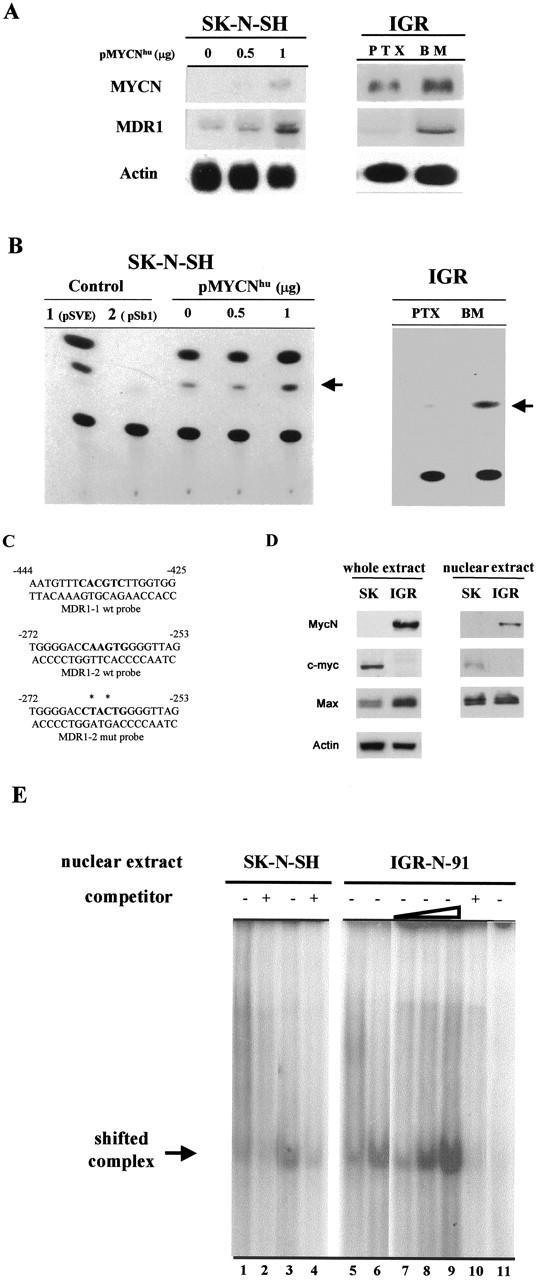Figure 5.

MycN-mediated induction of MDR1 promoter activity. A: IGR xenograft model (IGR): MYCN and MDR1 transcript levels for MYCN-transfected SK-N-SH neuroblasts and for PTX and BM neuroblasts. Northern blots of 10 μg total from parental SK-N-SH cells, from 0.5 and 1 μg of pMYCNhu-transfected SK-N-SH cells (left), and from PTX and BM neuroblasts (right), hybridized with 32P-labeled cDNA probes. Autoradiography of actin probe blotting demonstrated similar loadings. MYCN and MDR1 gene mRNA levels increase in parallel. B: CAT activity of the pMDR1-CAT construct transfected into the SK-N-SH and IGR cells. The SK-N-SH neuroblasts were co-transfected with 0.5 or 1 μg of pMYCNhu and 10 μg of pMDR1-CAT. The PTX and BM cells were transfected with 10 μg of pMDR1-CAT construct. Controls were performed in SK-N-SH cells transfected with 5 μg of pSVE-CAT construct or co-transfected with 10 μg of pSb1-CAT + 1 μg pMYCNhu constructs. PSVE and pSb1 constructs are used as positive (1) or negative (2) controlwith strong or weak promoter activity. The experiment was repeated at least twice and a representative transfection is shown. C: Synthetic oligonucleotides are used for gel shift assays. They correspond to the two E-boxes located within the proximal promoter region of the MDR1 gene, either wild-type (MDR1-1 wt and MDR1-2 wt) or mutated (MDR1-2mut) probes. The E-box binding sites are indicated in bold, and mutated bases with asterisks. D: Absence of c-myc protein expression in MYCN-amplified neuroblasts (IGR-N-91), and its presence in MYCN nonamplified neuroblasts (SK-N-SH), as demonstrated by immunoblots of total and nuclear extracts. Max expression is higher in whole extracts of IGR-N-91 cells. E: Electrophoretic mobility shift of oligonucleotide/nuclear protein complexes. Gel shifts were performed using two labeled double-stranded oligonucleotides, MDR1-1 wt and MDR1-2 wt incubated with nuclear extracts from SK-N-SH and IGR-N-91 neuroblasts, without (lanes 1, 3, 5–9, 11) or with (lanes 2, 4, 10) a 25-fold excess of respective competitor. A faint shifted complex is noted with the MDR1-1 probe, and SK-N-SH or IGR-N-91 nuclear extracts (lanes 1 and 5), whereas a stronger shifted complex is evidenced with the MDR1-2 probe (lanes 3, 6–9) with SK-N-SH or IGR-N-91 extracts. No complex is observed in the presence of the MDR1-2 mutated probe or IGR-N-91 nuclear extracts (lane 11).
